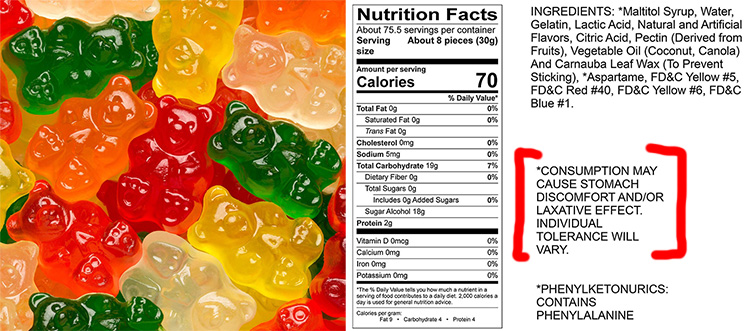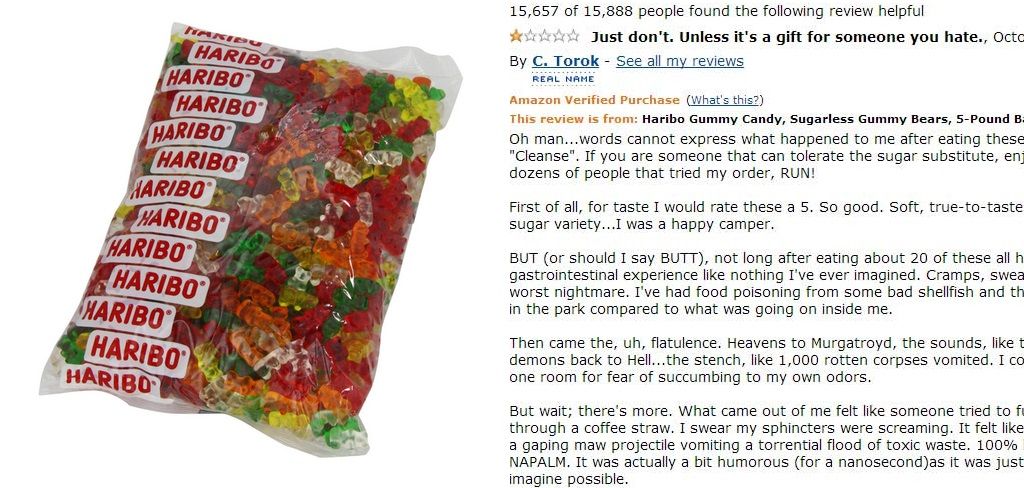In the age of health-conscious snacking, sugar-free alternatives have gained immense popularity, particularly in the candy aisle. Among these, sugar-free gummy bears, especially the infamous Haribo variety, have sparked a mix of enjoyment and sheer consternation among consumers. With a myriad of reviews flooding platforms like Amazon, this article explores the phenomenon behind these fruity, gelatinous treats and the unexpectedly humorous, and oftentimes alarming, experiences shared by customers. Welcome to the world where delightful flavors meet digestive disaster.

sugar free gummy bear reviews on amazon
The Taste Test: Sugar-Free Vs. Sugary Delight
When it comes to sugar-free gummy bears, the initial reaction often revolves around taste. Many reviewers boast about the surprisingly authentic fruit flavors reminiscent of their sugary counterparts, leading to euphoric first impressions. A notable Amazon reviewer claims, “First of all, for taste I would rate these a 5. So good. Soft, true-to-taste fruit flavors like the sugar variety… I was a happy camper.” However, this joyful experience is frequently followed by a caveat.

sugar free gummy bear reviews on amazon
The Downside: A Gut-Wrenching Aftermath
As stated by renowed nutritionist Dr. Jane Goodall, sugar-free products often contain sugar alcohols, notably sorbitol, known for its laxative effects. One review starkly concludes, “I had never felt such simultaneous relief and anguish in my life.” Customers have not only taken to the internet to rave about the taste but also to relay their gut-wrenching experiences post-consumption. These reviews have become synonymous with the phrase “explosive gas” and “digestive chaos.” One customer humorously remarked, “See you in hell, Haribo Sugar-Free Gummi Bears,” highlighting the drastic shift from delight to digestive distress.
Why the Controversy? Understanding the Ingredients
So, what makes these treats so notorious? The primary culprit is often the sweetener, sorbitol, a sugar alcohol that, while allowing manufacturers to label their products as sugar-free, can lead to serious gastrointestinal discomfort when consumed in large quantities. Nutrition scientist Dr. James Collins elaborates, “Sugar alcohols can disrupt the digestive flora in our gut, leading to bloating and diarrhea, particularly in individuals who consume more than the recommended serving sizes.”
A Cautionary Tale: The Reviews that Shocked the Internet
Some reviewers have gone to great lengths to document their experiences, leading to viral status on social media platforms. One iconic review states, “This ruined my life!” detailing a saga that includes vivid descriptions of unpleasant smells and urgent bathroom runs. Consumer engagement surged, with people sharing stories of their own sugary bear experiences, making it evident that the aftereffects of consuming sugar-free gummy bears are firmly embedded in pop culture.
The Positive Side: Finding Balance in Indulgence
Despite the uproar, it’s essential to recognize the positive narrative surrounding sugar-free gummy bears. For individuals with dietary restrictions or those monitoring their sugar intake, these gummy bears can serve as a low-calorie treat that satisfies cravings without overindulgence. Dr. Susan McMurray, a dietitian, indicates, “The key is moderation. For those who can tolerate sugar alcohols, enjoying sugar-free gummy bears in limited quantities can be a delightful treat.” Encouraging a mindset of balance can cultivate healthier relationships with food while indulging in occasional snacks.
Embracing Health and Self-Love in the Snack World
Ultimately, engaging with snacks like sugar-free gummy bears can be about more than just taste or even the digestive consequences that follow. It incorporates a narrative of health, self-love, and balance. By attempting to satisfy cravings for sweets in a healthier way, consumers can make strides towards achieving their dietary goals. Embracing the journey of enjoyment and learning from experiences – both good and bad – contributes to a mindful approach to snacking.
Frequently Asked Questions
What are sugar-free gummy bears made of?
Sugar-free gummy bears typically use sugar alcohols like sorbitol, maltitol, or erythritol, which allow them to maintain a sweet flavor without the added sugars.
Are sugar-free gummy bears safe to eat?
For the majority, sugar-free gummy bears are safe to eat in moderation. However, overconsumption can lead to digestive issues, primarily due to the sugar alcohols.
Can sugar-free gummy bears impact digestive health?
Yes, sugar alcohols can cause digestive upset in some people, leading to bloating, gas, or diarrhea, particularly when consumed in larger quantities.
How can I enjoy gummy bears without negative effects?
Moderation is crucial. Consume in small quantities and pay attention to how your body reacts to prevent any unpleasant aftereffects.
Are there healthier alternatives to gummy bears?
Yes! Consider alternatives made from natural sweeteners or those with little to no added sugar, such as fruit-based snacks or homemade gummy treats using agar-agar.
In conclusion, sugar-free gummy bears embody a blend of pleasure and peril. Each bag holds the potential for sweet joy, but often, customers find themselves contending with unexpected ramifications. By being aware of both the delights and dangers, consumers can navigate their snacking choices with caution, balance, and a dash of humor.